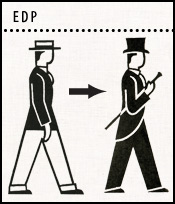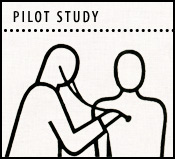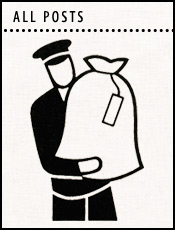What Is Happening in India – Between AsiaWheeling 1.0 and AsiaWheeling 2.0
Greetings from India!
Hello, नमसà¥à¤¤à¥‡ (Hindi – Namaste) and اسلام Ùˆ عليکم(Urdu – As-Salam-Wa-Alaikum). Thought I will open this post like most of our Bollywood movies open – with the title of the film being shown in the three languages – English, Hindi and Urdu. Very symbolic of the secular country that India is.
Now that we are returning to India for AsiaWheeling 2.0, the upcoming series of blog posts attempt to recapitulate and put into context the important events that have happened since. The aim is to orient the wheelers and AsiaWheeling followers to a fresh India understanding and an even more immersive experience than the last time.
Be it BRIC or BASIC, the emergence, then, and the recognition, now, of its power(soft or otherwise) and influence in the world has come to be widely acknowledged and accepted. But what needs to be carefully observed and studied is whether it is indeed the case or is it just rhetoric?
Does India really have what it takes to clean up its home first – improve the livelihood of its people, provide basic living amenities to large sections of its underprivileged population and better infrastructure to the industries, provide better access to health care and education to its young population, foster entrepreneurship and create a sustainable job creation environment, take care of the environment and otherwise improve the quality of life of its people. While the jury is still out on how much progress has happened on this front, we see India increasingly playing a larger and more active role in the world forums, be it the WTO talks or the recent Copenhagen Summit.
Observers and policy-makers expect that the combination of India’s internal growth and the strengthening of its voice in the global arena will propel India into the big league on the world stage.
We will now take a look at different aspects of India’s society, politics, economy and people to understand how they have been shaped in the recent times.
Politics
The one thing which keeps India bound together, apart from craze for the game of Cricket and movies, is the strong and robust democracy. Considering the complexities involved in governing a country like India, it is a matter of pride that by and large, Indian democracy has grown and matured in the 60 years that India has been an independent country. No doubt there are and there will be challenges and some even severe. That India has been able to stave these off successfully and continues to grow, some might say slowly, is because of the strong foundation of democracy and an open culture.
2009 witnessed the world’s largest democratic exercise being conducted in India – the elections to the Lok Sabha, the more powerful lower house of Indian parliament. With an electorate of 714 million, it was a great logistical achievement to have successfully carried off an activity of this scale.
The incumbent United Progressive Alliance (UPA) led by the slightly left of center Congress party came back into power with Dr. Manmohan Singh, an Oxford educated economist widely credited for the economic reforms carried out in the early 90’s, being at the helm of affairs for a second term. These elections also saw a stronger emergence of Rahul Gandhi, son of Rajiv Gandhi (a former Prime Minister) and Sonia Gandhi (current Chairperson of the UPA and President of the Congress Party), grandson of Indira Gandhi (a former Prime Minister) and great grandson of Pandit Jawaharlal Nehru (India’s first Prime Minister) as the next face of the Congress Party. If the Congress does well during the next elections in 2014, he is widely tipped to be the Prime Minister. Concerns are being raised though about such a strong domination of Indian politics by the Nehru-Gandhi family.
Interesting to note that the campaign slogan for the Congress Party was Jai Ho, the anthem from the Oscar-winning movie Slumdog Millionaire, which also won Oscars for two Indians, A R Rahman and Resool Pookutty.
The other front, the National Democratic Alliance (NDA) led by the right of center Bhartiya Janata Party did not do as well as expected and even went on to lose the vote share from the last elections. Inability to put up a united face by its top leadership and the inability to handle an incident of alleged inflammatory speech in one of the most crucial states in India, Uttar Pradesh by one of its young faces, incidentally also from the Nehru-Gandhi family, perhaps cost the party dear.
The campaign approaches of the two main fronts were in stark contrast. While the UPA used the traditional media – print, television, outdoor events to a large extent, the BJP ran an Obama-style internet campaign to connect with the younger audiences projecting the Party President and a former Deputy Prime Minister L K Advani as the party’s PM candidate. The jury is still out on the success or the failure of this campaign, but it is heartening that mainstream politics has understood the need to use technology to reach out to their audience.
While we are on the use of technology in politics and connecting with people, India perhaps already has a success story. Dr. Shashi Tharoor,a former UN diplomant used technology effectively, notably the Internet and especially Twitter, earlier during his campaign for and (now presently in office as) the Minister of State for External Affairs. With over 600,000 followers on Twitter, he is being called India’s Twittering Minister and even Twitter co-founder Biz Stone acknowledges this in one of his regular emails to Twitter users.
A very important aspect of the 2009 elections was the decline of the Left parties that wielded considerable influence in the previous UPA government, though they were supported only from the outside. With the gradual decline of their influence in strongholds like West Bengal and Kerala, one wonders whether their ideologies and policies are still relevant in these times that have seen very fast transformation.
Having said that, Indian democracy definitely needs diverse views and opinions and a healthy debate among those holding different points of view. But then, it is also not very healthy when certain sections holds hostage the government policies to suit their ideologies like the Left did during the last government. With the conservative Left no longer part of the government, there are expectations that economic reforms will gather pace and the government will take a more open approach in its policies toward its people.
In subsequent posts, we will try and cover other aspects of India to help us understand it better.
We leave you with this video of Dr. Shashi Tharoor speaking at the TEDIndia event held in Mysore recently where he talks about India’s soft power and how it’s the people and the culture that make a country strong and not necessarily the military or the economic might. Highly recommended, please do watch.
Welcome to India!















Comments
Comments are closed.